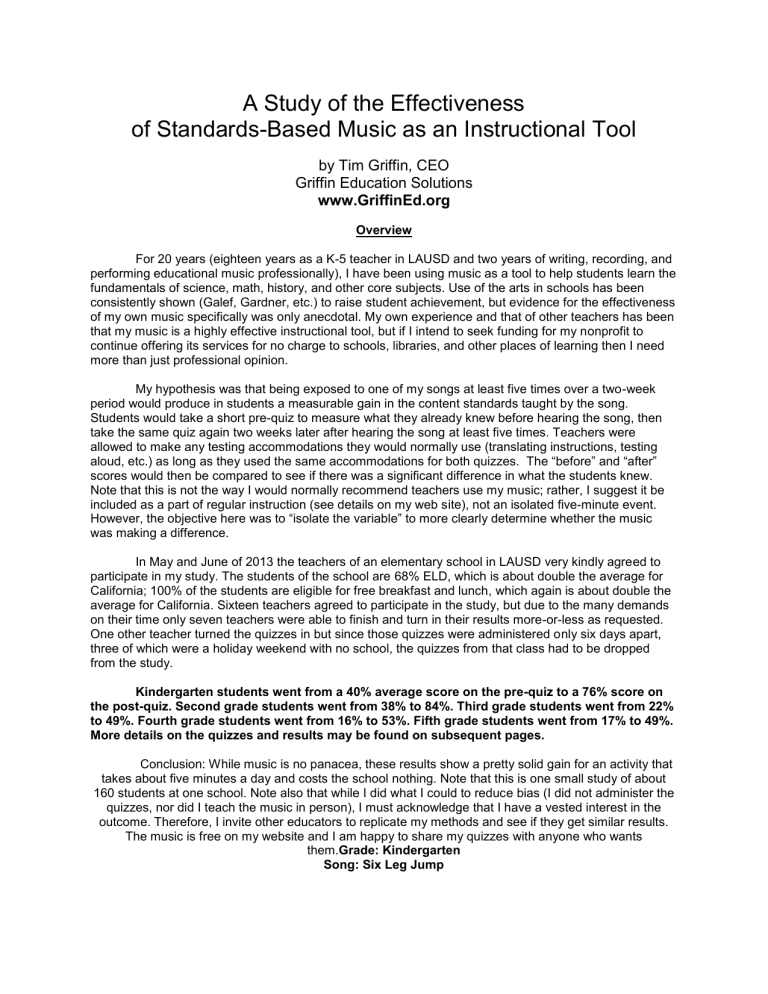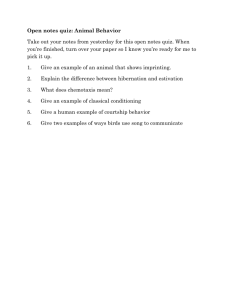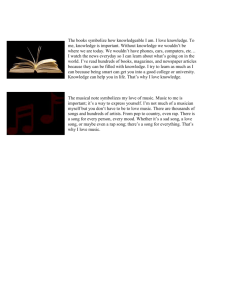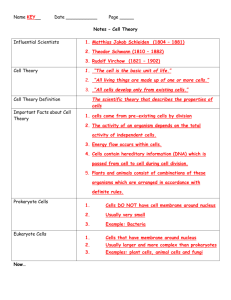You can the whole doc here

A Study of the Effectiveness of Standards-Based Music as an Instructional Tool by Tim Griffin, CEO
Griffin Education Solutions www.GriffinEd.org
Overview
For 20 years (eighteen years as a K-5 teacher in LAUSD and two years of writing, recording, and performing educational music professionally), I have been using music as a tool to help students learn the fundamentals of science, math, history, and other core subjects. Use of the arts in schools has been consistently shown (Galef, Gardner, etc.) to raise student achievement, but evidence for the effectiveness of my own music specifically was only anecdotal. My own experience and that of other teachers has been that my music is a highly effective instructional tool, but if I intend to seek funding for my nonprofit to continue offering its services for no charge to schools, libraries, and other places of learning then I need more than just professional opinion.
My hypothesis was that being exposed to one of my songs at least five times over a two-week period would produce in students a measurable gain in the content standards taught by the song.
Students would take a short pre-quiz to measure what they already knew before hearing the song, then take the same quiz again two weeks later after hearing the song at least five times. Teachers were allowed to make any testing accommodations they would normally use (translating instructions, testing aloud, etc.) as long as they used the same accommodations for both quizzes. The “before” and “after” scores would then be compared to see if there was a significant difference in what the students knew.
Note that this is not the way I would normally recommend teachers use my music; rather, I suggest it be included as a part of regular instruction (see details on my web site), not an isolated five-minute event.
However, the objective here was to “isolate the variable” to more clearly determine whether the music was making a difference.
In May and June of 2013 the teachers of an elementary school in LAUSD very kindly agreed to participate in my study. The students of the school are 68% ELD, which is about double the average for
California; 100% of the students are eligible for free breakfast and lunch, which again is about double the average for California. Sixteen teachers agreed to participate in the study, but due to the many demands on their time only seven teachers were able to finish and turn in their results more-or-less as requested.
One other teacher turned the quizzes in but since those quizzes were administered only six days apart, three of which were a holiday weekend with no school, the quizzes from that class had to be dropped from the study.
Kindergarten students went from a 40% average score on the pre-quiz to a 76% score on the post-quiz. Second grade students went from 38% to 84%. Third grade students went from 22% to 49%. Fourth grade students went from 16% to 53%. Fifth grade students went from 17% to 49%.
More details on the quizzes and results may be found on subsequent pages.
Conclusion: While music is no panacea, these results show a pretty solid gain for an activity that takes about five minutes a day and costs the school nothing. Note that this is one small study of about
160 students at one school. Note also that while I did what I could to reduce bias (I did not administer the quizzes, nor did I teach the music in person), I must acknowledge that I have a vested interest in the outcome. Therefore, I invite other educators to replicate my methods and see if they get similar results.
The music is free on my website and I am happy to share my quizzes with anyone who wants them.
Grade: Kindergarten
Song: Six Leg Jump
In May 2013 three kindergarten classes (Ms. Q, Ms. R, and Ms. V) took a pre-quiz to determine what the students already knew about insects and other arthropods. Note that correctly identifying insects and other types of animals based on physical structures is a specified standard in the NGSS and California
Science Standards.
The quiz shows ten simple pictures of animals: five insects (mosquito, ladybug, grasshopper, ant, and cicada) and five other arthropods (spider, centipede, tick, sowbug, and isopod) in no particular order, then challenges the students to identify the five insects. One point was scored for each insect correctly identified; one point was deducted for each non-insect arthropod falsely identified as an insect. Although in theory this creates a possibility of a negative score, the minimum recorded score was set at zero. Note also that nearly all the scores were odd numbers due to the fact that a wrong answer (i.e. misidentifying a spider as an insect) causes a loss of a point. Thus, a quiz with four correctly identified insects and one misidentified non-insect would score three points.
After doing the pre-quiz, students got to hear the song Six Leg Jump at least five times over a two-week period. Here is a link to the song: http://www.griffined.org/six-leg-jump/
Then the students took the same quiz again to see if they had learned anything in the meantime.
Here is the data set from the pre-quiz , sorted by score; note that 5 would be a perfect score:
0 0 0 0 0 0 0 0 0 0 0 0 1 1 1 1 1 1 1 1 1 1 1 1 1 1 1 1 1 1 1 1 1 1 1 1 1 2 2 3 3 3 3 3 3 3 3 3 3 3 3 3 3 3 3 3
5 5 5 5 5 5 5 5 5 5 5
67 students tested, average score is 2.01/5 or 40%.
Now the data for the post-quiz after hearing the song at least five times over two weeks:
0 1 1 1 1 2 2 2 2 2 2 2 2 2 2 2 2 2 2 2 3 3 4 4 4 4 5 5 5 5 5 5 5 5 5 5 5 5 5 5 5 5 5 5 5 5 5 5 5 5 5 5 5 5 5 5
5 5 5 5 5 5
60 students tested, average score is 3.8/5 or 76%.
Comments: The kindergartners made a significant gain. Grade: 2
Song: Six Leg Jump
On May 13, 2013 a second-grade class (Ms. M) took a pre-quiz to determine what the students already knew about insects and other arthropods. Note that correctly identifying insects and other types of animals based on physical structures is a specified standard in the NGSS and California Science
Standards.
The quiz shows ten simple pictures of animals: five insects (mosquito, ladybug, grasshopper, ant, and cicada) and five other arthropods (spider, centipede, tick, sowbug, and isopod) in no particular order, then challenges the students to identify the five insects. One point was scored for each insect correctly identified; one point was deducted for each non-insect arthropod falsely identified as an insect. Although in theory this creates a possibility of a negative score, the minimum recorded score was set at zero.
After doing the pre-quiz, students got to hear the song Six Leg Jump at least five times over a two-week period. Here is a link to the song: http://www.griffined.org/six-leg-jump/
Then the students took the same quiz again to see if they had learned anything in the meantime.
Here is the data set from the pre-quiz , sorted by score; note that 5 would be a perfect score:
0 0 0 0 0 0 1 1 1 1 1 1 2 2 3 3 3 3 3 3 4 4 5 5
25 students tested, average score is 1.92/5 or 38%.
Now the data for the post-quiz after hearing the song at least five times over two weeks:
1 2 2 3 3 4 5 5 5 5 5 5 5 5 5 5 5 5 5 5 5 5 5 5
24 students tested, average score is 4.2/5 or 84%.
Comments: A significant gain.
Grade: 3
Song: The Smith
On May 14, 2013 a third-grade class (Ms. N) took the following pre-quiz to determine what the students already knew about several types of rocks, metals, and alloys.
Quiz: Rocks and Metals
Let’s see how much you know about some different kinds of stone and metal. Read the short story below, then use the word list at the bottom to fill in the blanks. If you don’t know something yet, you can just write a question mark in the blank space.
Back in the stone age, people made their tools out of rocks. The best kinds of stone for making tools were obsidian and ______________. Then people discovered how to heat up a very soft metal called ______________ and make it into tools. Those first metal tools were better than stone, but too soft to be very useful. By mixing in a harder metal called ______________, people invented the first alloy (a metal made by mixing other kinds of metals). This first alloy was called ______________ and it was great for making tools.
Most of the tools we use today are made of steel, which is an alloy (mix) of ______________ and
______________. bronze
Here is a list of words for filling in the blanks: carbon copper flint iron tin
After doing the pre-quiz, students got to hear the song The Smith at least five times over a two-week period. Here is a link to the song: http://www.griffined.org/the-smith/
Then the students took the same quiz again to see if they had learned anything in the meantime.
Here is the data set from the pre-quiz , sorted by score; note that 6 would be a perfect score:
0 0 0 0 0 0 0 1 1 1 1 1 1 1 1 2 2 2 2 2 2 2 3 4 4
25 students tested, average score is 1.32/6 or 22%.
Note that with six questions and six possible answers, this is slightly better than we would expect from random guessing.
Now the data for the post-quiz after hearing the song at least five times over two weeks:
0 0 1 1 1 1 1 1 1 1 2 2 2 3 3 3 3 3 3 3 4 4 6 6 6
25 students tested, average score is 2.44/6 or 49%.
Comments: 49% is not mastery, but students made a significant gain.
Grade: 4
Song: The Smith
On May 14, 2013 a fourth-grade class (Ms. D) took the following pre-quiz to determine what the students already knew about several types of rocks, metals, and alloys.
Quiz: Rocks and Metals
Let’s see how much you know about some different kinds of stone and metal. Read the short story below, then use the word list at the bottom to fill in the blanks. If you don’t know something yet, you can just write a question mark in the blank space.
Back in the stone age, people made their tools out of rocks. The best kinds of stone for making tools were obsidian and ______________. Then people discovered how to heat up a very soft metal called ______________ and make it into tools. Those first metal tools were better than stone, but too soft to be very useful. By mixing in a harder metal called ______________, people invented the first alloy (a metal made by mixing other kinds of metals). This first alloy was called ______________ and it was great for making tools.
Most of the tools we use today are made of steel, which is an alloy (mix) of ______________ and
______________.
Here is a list of words for filling in the blanks: bronze carbon copper flint iron tin
After doing the pre-quiz, students got to hear the song The Smith at least five times over a two-week period. Here is a link to the song: http://www.griffined.org/the-smith/
Then the students took the same quiz again to see if they had learned anything in the meantime.
Here is the data set from the pre-quiz , sorted by score; note that 6 would be a perfect score:
0 0 0 0 0 0 0 0 0 1 1 1 1 1 1 1 1 1 1 1 1 1 2 2 2 3 4
27 students tested, average score is .96/6 or 16%.
Note that with six questions and six possible answers, this is about what we would expect from random guessing.
Now the data for the post-quiz after hearing the song at least five times over two weeks:
0 1 1 1 2 2 2 2 2 3 3 3 3 3 3 3 3 4 4 4 4 4 4 4 6 6 6 6
28 students tested, average score is 3.18/6 or 53%.
Comments: 53% is not mastery, but students made a significant gain.
Grade: 5
Song: The Smith
On May 13, 2013 a fifth-grade class (Mr. S) took the following pre-quiz to determine what the students already knew about several types of rocks, metals, and alloys.
Quiz: Rocks and Metals
Let’s see how much you know about some different kinds of stone and metal. Read the short story below, then use the word list at the bottom to fill in the blanks. If you don’t know something yet, you can just write a question mark in the blank space.
Back in the stone age, people made their tools out of rocks. The best kinds of stone for making tools were obsidian and ______________. Then people discovered how to heat up a very soft metal called ______________ and make it into tools. Those first metal tools were better than stone, but too soft to be very useful. By mixing in a harder metal called ______________, people invented the first alloy (a metal made by mixing other kinds of metals). This first alloy was called ______________ and it was great for making tools.
Most of the tools we use today are made of steel, which is an alloy (mix) of ______________ and
______________. bronze
Here is a list of words for filling in the blanks: carbon copper flint iron tin
After doing the pre-quiz, students got to hear the song The Smith at least five times over a two-week period. Here is a link to the song: http://www.griffined.org/the-smith/
Then the students took the same quiz again to see if they had learned anything in the meantime.
Here is the data set from the pre-quiz , sorted by score; note that 6 would be a perfect score:
0 0 0 0 0 0 0 1 1 1 1 1 1 1 1 1 1 1 1 1 2 2 2 2 4
25 students tested, average score is 1.0/6 or 17%.
Note that with six questions and six possible answers, this is about what we would expect from random guessing.
Now the data for the post-quiz after hearing the song at least five times over two weeks:
1 1 1 1 1 2 2 2 2 2 2 2 2 3 3 3 3 3 4 4 4 4 4 4 4 4 4 5 6 6
30 students tested, average score is 2.97/6 or 49%.
Comments: 49% is not mastery, but students definitely made a significant gain.







